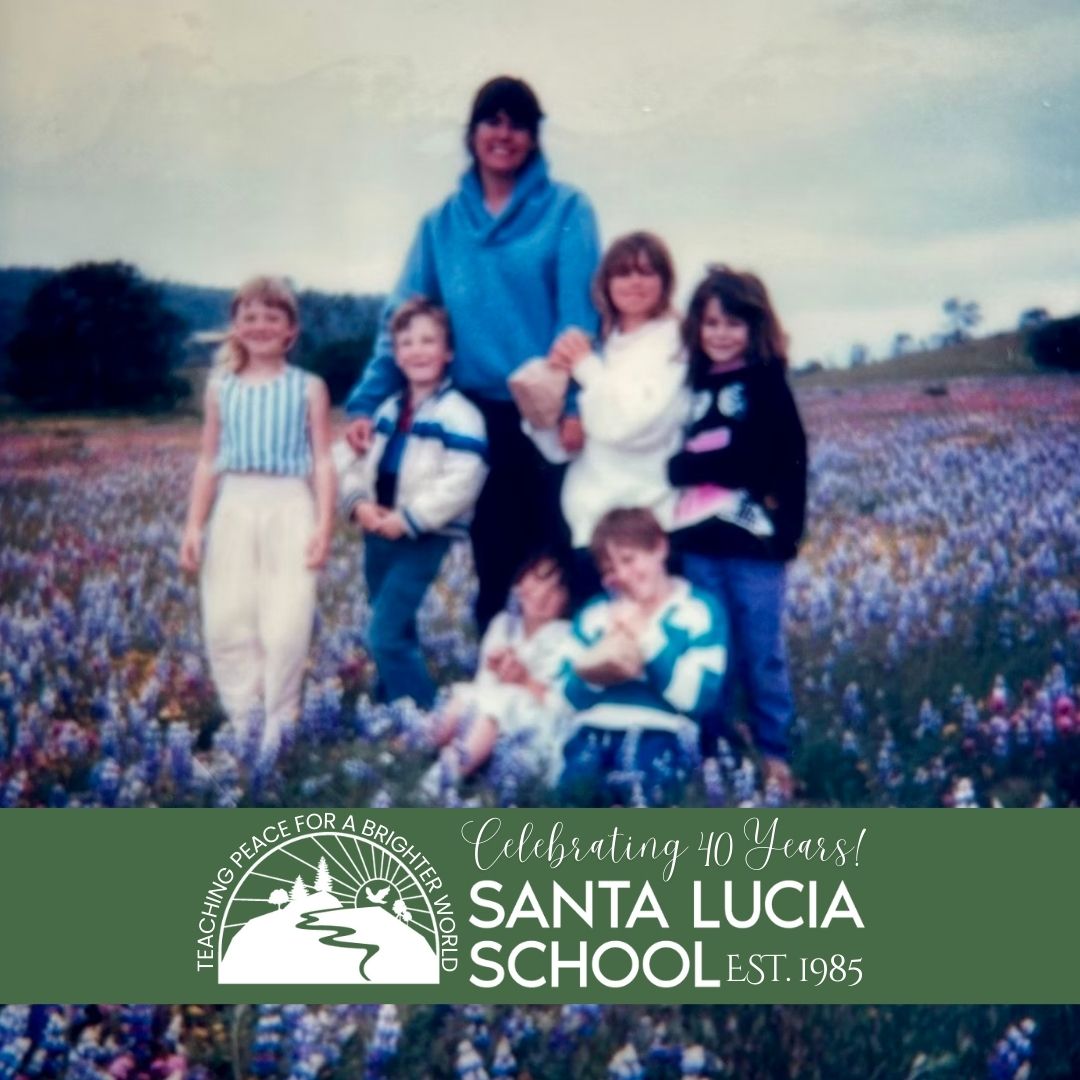Santa Lucia School's Humble Beginnings

Please enjoy this story, from our school's founder Jan Thompquist, about how Santa Lucia School grew into what it is today.
⎯
In September of 1985, a new little alternative elementary school opened on Salinas Road in rural Atascadero, adjacent to farmland and the mostly underground Salinas River. The up-start facility was a lovely knotty pine paneled room and bathroom in a converted garage. The playground consisted of one very large 300 year old valley oak tree with a huge 4 foot high pile of new sand underneath. On the opening day the student body totaled five, four students and one teacher.
I was one of the lucky ones who always knew what they wanted to do when they grew up. I knew in 7th grade that I wanted to be a teacher. The summer after I graduated from college, I was assigned a reading list as a prequel to entering the credential program. I read the ten books with enthusiasm: Summerhill by AS Neil, Teaching as a Subversive Activity by Herb Kohl, What Do I Do Monday? by John Holt, How Children Learn by James Herndon … this was the early 1970’s when Humanistic Education was first being introduced. I took courses in this new branch of education and volunteered in an open classroom, worked cooperatively with other students on projects where there were no grades assigned, and studied the philosophies of classic alternative educators like Maria Montessori. I was hooked. It turns out learning CAN be its own reward and, by design, last a lifetime.
Due to proximity and good fortune, in 1984 the president of a philanthropic foundation offered me the opportunity to start a school. That spring of 1985 I held a first meeting of prospective parents in my living room. The parents took turns answering the question: “If you could have anything you wanted for your child’s education, what would it be?” I took notes. A holistic education mission statement and a budget proposal were submitted, then accepted, by the Board of the Cook Brothers Educational Fund. We were off and running.
Those first years held magical moments. The students and I got to know the places we lived and learned to love them, as John Muir and Wendell Berry have suggested. After lunch the children would swing out over the pond from a rope tied to an oak tree. If it was a warm day, they could choose to let go. P. E. could be lining up in the starting gates next door, listening for the signal, and then flying down the racehorse track. Imitating the ducks by pecking up popcorn, counting the spring ducklings and piglets, and floating on our backs like leaves down the shallow Salinas River were all learning activities. We turned our giant sand pile into a 3-D model of Earth’s 7 continents. We climbed to the top of Cerro Alto, played cooperative games amongst the wildflowers at the Avenales, took a whale watching trip out of Morro Bay, slept in the cabins in snowy Giant Forest, woke up at 4 am to see Halley’s Comet. We celebrated birthdays, International Peace Day, Halloween, Santa Lucia Night, and May Day.
The children were enthusiastic, curious, and free.
There were, of course, many challenges in the beginning. We had outgrown our space by the beginning of the second year and started looking for something larger. I took a compass and drew a circle with an 8 mile radius from my house; this is where we would start. The day the realtor brought Sue Cook and I to 1460 Plum Orchard Lane he said, “I think you’re going to like this!” He was right. As Sue and I sat on a log down by the creek, we fell in love with this property and wanted to save one of the best pieces of land for the children. However, a church is the only project more difficult to site than a school. For the next two and a half years our school community moved three times, all the while chasing the proper permits. Writing letters and appearing before the city council, hiring a consultant to prepare our appeals case for the Board of Supervisors when our application was denied, remodeling and upgrading Plum Orchard Lane to institutional standards; it was daunting. At one point there was a three month period where we had no home base; John Beccia, Janine Kirkpatrick, and I taught in private homes out of the trunks of our cars. But as we have found over the ensuing four decades, the “angels” appear when they are most needed.
-Jan Thompquist, Santa Lucia School Founder
⎯
What a dream our founder and director, Jan Thompquist had when she began Santa Lucia School. She did indeed get approval and the upgrades needed on the little house that became the site of Santa Lucia School. For 36 years, Santa Lucia School has been nestled on a small street in Templeton on 5 acres and adjacent to the beautiful Santa Rita Creek. Children at Santa Lucia School have learned much more than just reading, writing, and arithmetic. They have experienced a small school community of teachers, parents and students who really know them. Where each child is valued for who they are and what they bring to the community. As we begin our 40th year of Santa Lucia School it seemed fitting to revisit the origin of Santa Lucia School and the dream that one woman had. Thank you, Jan, for creating a magical place for so many children and families that has been going strong for 40 years. What a legacy!